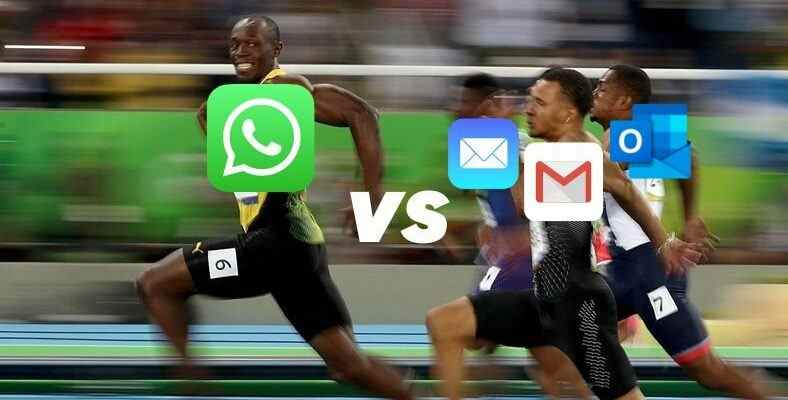The place of e-mail and instant message applications such as WhatsApp and Telegram is very important in our lives. These two technologies cover almost the majority of our daily communication. Although both are designed to send the sender’s messages to the recipient, e-mail technology remains slower than instant messaging technology.
Almost everyone has at least one e-mail account these days. Simply put, an e-mail address may be required even to register for a social media application or a website. The basic idea of e-mail, which is used more frequently in this type of work and has an important place in our lives, is also in instant message applications. send the sender’s messages to the receiver lies.
Even though e-mail technology is based on the same idea as instant message technology, how is it that mails are compared to instant messages? delivered later? Have you ever thought about this before? Let’s look at the reason why e-mail messages are delivered later than instant messages.
First, it is necessary to understand the working logic of e-mail, which is similar to leaving a letter at the post office.
When you try to send your e-mail to someone, many messages appear in the background before the e-mail reaches the recipient. technical action is in progress. If we briefly touch on these processes; When you hit the “send email” button, Gmail, Outlook, or any email client you use is the first to go. connecting to the server. The outgoing server verifies the sender’s information and places the message in the outgoing queue for sending. When the connection is established, a message is sent to the other party’s server. To explain this situation with a simple example, we can compare it to going to the post office and leaving a letter or going to the courier branch and dropping the cargo.
In the continuation of the process, when the e-mail reaches the receiving server, the receiving server checks the e-mail address, checks for spam and viruses (These checks vary according to the e-mail client.) leaves it in the inbox. When the recipient refreshes their mailbox, the client checks for anything new and leaves the message in the recipient’s email inbox.
We looked at the working logic of e-mail, but let’s not look at the logic of the instant message, shall we?

The difference between instant messaging and other types of communication to a real-time nature that it has. Today, providing instant messaging; There are dozens of messaging apps that users can use according to their preferences, such as WhatsApp, Telegram, BIP and even Twitter’s DM feature. These messaging apps allow millions of people from all over the world to communicate with each other every day.
When you use a messaging application, there is a direct connection between you and the other person, as if you were looking at them face to face. The central server of the application determines who is online, the IP address of everyone online transmits it to your machine. In this way, when you send a message to someone, the central server directly to you It connects it to the receiver’s machine and then provides the possibility to send messages in real time. That’s why being “online” has its pros and cons.
Instant messaging applications work fast because the sender and receiver use the same application, and the speed difference compared to e-mails starts here because they are processed on the same server.
So where does this speed difference come from? Let’s combine some more basics.
The main reason why e-mails take minutes or even hours to reach the recipient with a number of servers they are designed to work. Unlike instant messages, emails have to circulate between several locations before they land in the recipient’s inbox. It works on the e-mail store and forward model, messages are stored on the server until they are delivered to the recipient.
E-mail operation also has the advantage of server backups, that is, if a server crashes during the message, the message is sent to the backup server. If the e-mail is not delivered, the servers make several more attempts to send the message. That is, the e-mail system will never send instant messages. not designed. Still, today’s e-mail infrastructures have experienced massive advances in exchanging messages, but despite these advances, delays still occur.
Instant messaging services real time It is designed to be the sender’s message, so if the sender’s message is not delivered to the receiver, he forgets it and moves on. Instant messaging programs do not bother to resend the message, unlike e-mail services. That’s why emails aren’t always as fast as instant messages.
Sources: Zoho, Science ABC, Ask Leo
